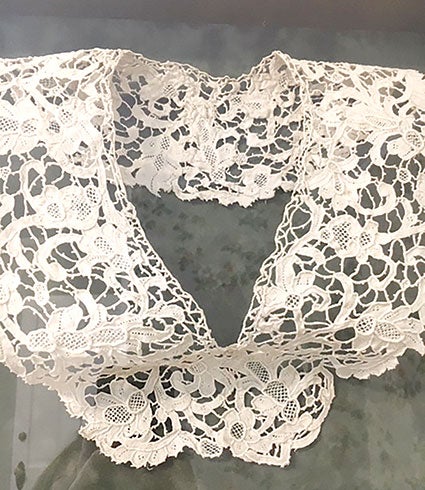Hormel Historic Home: The allure of lace
Published 5:57 am Saturday, October 5, 2019
I have never made lace. Have you?
In 1929, the ladies of the Y.W.C.A. apparently knew how to repair it and maybe they knew how make it. They valued their newly donated headquarters which had been the home of George and Lillian Hormel, and they took special measure to keep it in excellent condition.
On a visit to Austin in September 1929, Mrs. George A. Hormel inspected the home she had lovingly entrusted to the Y.W.C.A. and said, “It is kept in as perfect a condition as when it was my home.”
A tidbit in the Austin Daily Herald dated Sept. 18, 1929 reported that Mrs. Hormel’s statement:
“… was a fine compliment to the women who have the care of the building, grounds, furniture and furnishings. It is not every public or semi-public building that is kept up as is this one. Every woman knows how lace curtains and overdrapes will show the passing of time.
The careful housewife keeps her eye on such things. They cost money and thrift is essential even in these days. Clever needlewomen of the Y.W.C.A. took those curtains and darned them with net, and the work was so well done the worn spots are not to be seen. The overdrapes of the windows were turned upside down and they look like new.”
In this age of disposable décor and furnishings, it is admirable that the women of the Y.W.C.A. were so meticulous about preserving what they had been given. The Hormel Historic Home has on display a sample of a lace collar and cuffs worn by Germaine Hormel, the daughter-in-law of George and Lillian. It is labeled as Bobbin Lase of the Buckingham Point style. Since I already confessed that I have little knowledge of lace, I had to research what both Bobbin Lace and Buckingham Point meant.

An example of lace on display at the Hormel Historic Home.
For non sewers, here is a brief explanation of bobbin lace. Bobbin lace uses bobbins made of bone, ivory or wood to hold the threads and pins to determine its pattern. It is made by braiding and twisting lengths of thread. Buckingham Point, commonly known as Bucks Point, originated in Buckinghamshire, England, and made its debut toward the end of the 18th century. Germaine would have looked very elegant adorned in the fine lace.
The curtains that the 1929 Y ladies took care to repair were eventually replaced with a more commercialized machine made lace, but I am grateful the ladies did what they could to preserve the historic features of the home. One strength of HHH is that it has been treasured since its construction. From its finest lace to its plaster walls, it has been cared for.
Health Living Lecture
11:30 a.m., Thursday, Oct. 10
Presented by Jen Haugen, registered dietitian and Pampered Chef consultant, cooking for food allergies and sensitivities. Free and open to the public.
Duets & Desserts
1-2:30 p.m., Sunday, Oct. 13
Instrumental and vocal musicians of all ages are invited to perform a duet in the historic living room. Casual and fun environment in which to share musical talent. Free


